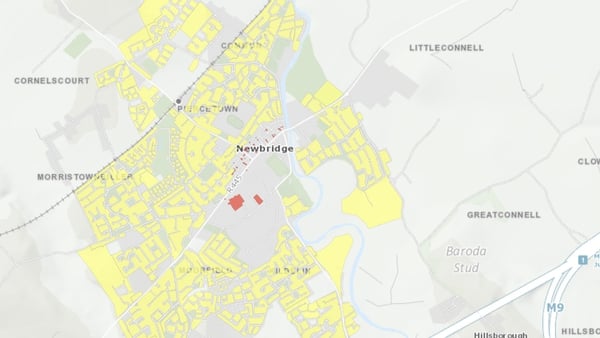A number of housing measures were introduced this week in Budget 2023 aimed at increasing the supply of residential properties for purchase or rent to meet demand. One such measure is the Vacant Homes Tax (VHT).
Taxes generally have two different purposes: one is to raise revenue and one is to change the behaviour of the taxpayer. In this case, it is the latter: the tax is clearly not a revenue-generating measure (as the estimated yield is in the region of only €3-4 million), but an attempt to incentivise (or penalise!) owners of vacant properties in a market where there is insufficient supply.
We need your consent to load this rte-player contentWe use rte-player to manage extra content that can set cookies on your device and collect data about your activity. Please review their details and accept them to load the content.Manage Preferences
From RTÉ Radio 1's News At One, chair of the Oireachtas committee on housing, Steven Matthews, on a new report into derelict and vacant homes
There are vacant and derelict properties in every city, town and village in Ireland. While derelict sites are subject to the Derelict Site Levy (currently 7% of market value), residential and habitable vacant homes are already subject to the Local Property Tax. Despite this, vacant properties persist and the overall figure is significant. The estimates range from a high of 166,752 vacant properties, as per the CSO April 2022 Census preliminary results, to a low of 57,206 vacant properties, per the local property tax Nov 2021 returns, with an intermediate figure of 90,158 according to a 2021 report from GeoDirectory.
Before Budget 2023, the Commission on Taxation & Welfare's report recommended that vacant properties should be subject to a property tax surcharge, with the vacancy surcharge applying to residential properties that are vacant for an "unreasonable" length of time. As with any property tax, the base, rate, assessment, and collection are some of the most important design features. In Budget 2023, we learnt that the tax base will be any property that is occupied for less than 30 days in a 12-month period.
We need your consent to load this rte-player contentWe use rte-player to manage extra content that can set cookies on your device and collect data about your activity. Please review their details and accept them to load the content.Manage Preferences
From RTÉ Radio 1's News At One, Minister for Housing Darragh O'Brien on the Vacant Homes Tax
As with other property taxes there are a number of exemptions to the base, justified "to ensure property owners are not unfairly charged for temporary periods of vacancy with genuine reasons". They include properties recently sold or currently listed for sale or rent, properties vacant due to the occupier's illness or long-term care, and properties vacant as a result of significant refurbishment work.
The rate will be equal to three times the property’s existing local property tax liability and that's before the application of the local adjustment factor, where the local council can vary the central rate by +/-15% to reflect local economic and financial conditions. As with the local property tax, it will be self-assessed and administered by the Revenue Commissioners.
The self-assessed nature of the tax and the exemptions listed are not surprising or necessarily a problem. Self-assessment and exemptions due to property transfer, redevelopment, or owner’s ill health are common in other jurisdictions that have introduced vacant or empty homes taxes (in Australia and Canada, for example).
We need your consent to load this rte-player contentWe use rte-player to manage extra content that can set cookies on your device and collect data about your activity. Please review their details and accept them to load the content.Manage Preferences
From RTÉ Radio 1's Drivetime, Mike McCartney reports on derelict homes in Charleville, Co Cork
But the definition of a vacant property and the rate applied are both surprising and problematic. In other countries and cities around the world that have introduced a vacant property tax, the usual cut-off period is six months. In the Irish case it is one month, which is a very low bar or threshold to meet. Thus, properties (e.g. holiday homes) that are occupied for only 30 days in a 12-month period will not be subject to the new levy.
Furthermore, the rate that other jurisdictions have applied is at least 1% of the market value of the property. The Irish vacant homes tax rate will be three times the local property tax liability which, for the majority of properties, is based on a rate of 0.1029%, resulting in a levy of only 0.3%. Reaction on social media and elsewhere has been mixed, with supporters of a vacancy tax very critical of the one-month time period and the derisory rate.
The overly generous length of time that a property can remain unoccupied, combined with a very low rate, is unlikely to result in owners of vacant dwellings releasing their properties onto the market. For this to be effective and contribute to increased supply, the time period and rate needs to be more in line with international norms, namely six months and 1%. With further details of the tax to be included in the Finance Bill, there is still an opportunity to make these changes which would contribute to an increase in supply in what many regard as a dysfunctional property market.
The views expressed here are those of the author and do not represent or reflect the views of RTÉ






